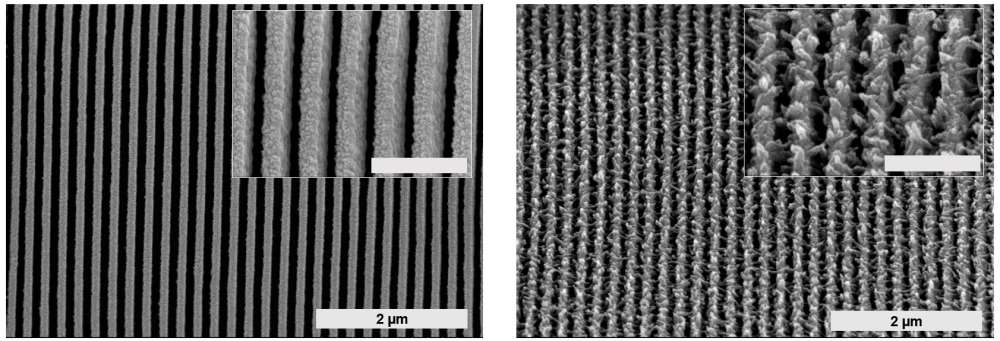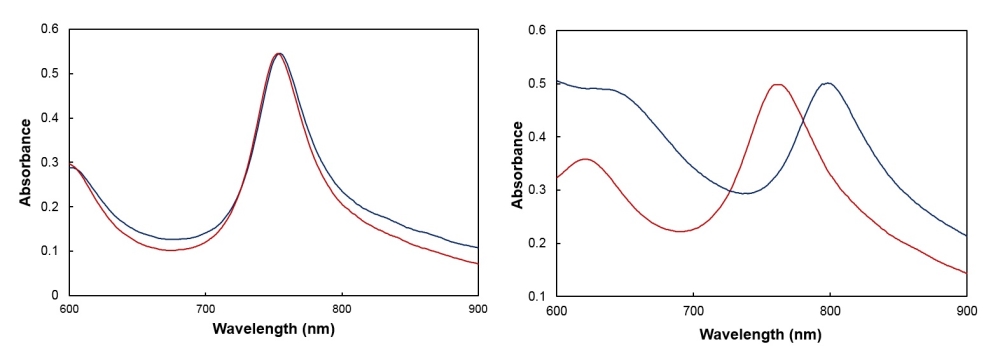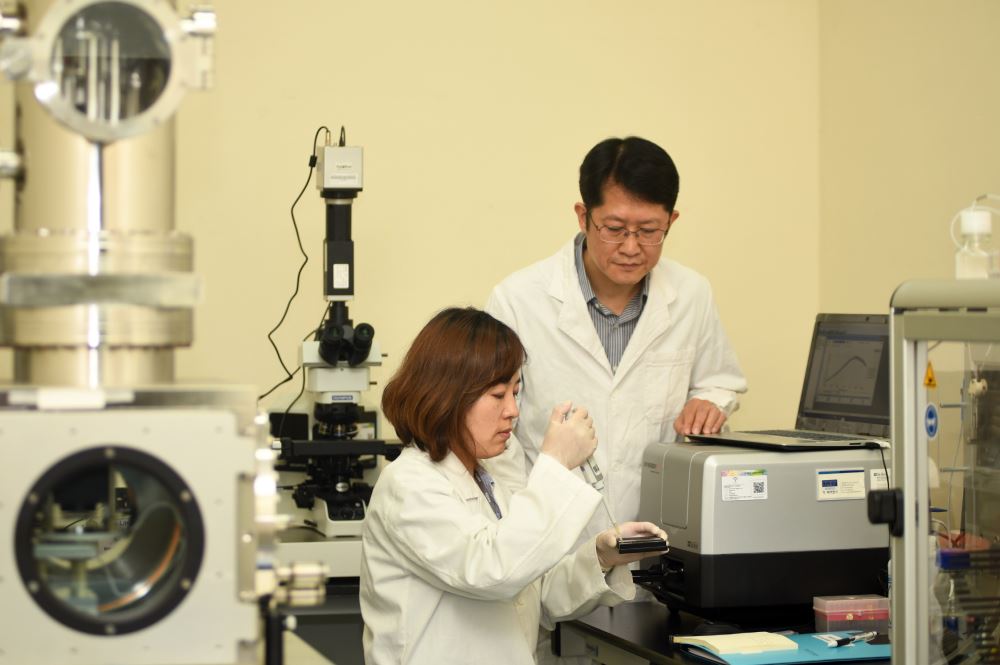
News & Updates
Discrimination of single nucleotide mismatches enables early cancer diagnosis
- Writerkrissadmin
- Date2018-06-07 00:00
- Hits10990
Discrimination of single nucleotide mismatches enables early cancer diagnosis
- Low-cost, high-sensitivity miRNA sensor developed -
# RNA molecules in the human body express protein according to genetic information in DNA. A microRNA (miRNA) is a small RNA molecule that suppresses protein expression of other RNA, thereby playing a key role in all stages from cell birth to death.
A research team of the Korea Research Institute of Standards and Science (KRISS, President Sang-Ryoul Park) developed a low-cost, high-sensitivity sensor capable of accurately detecting miRNA in human tissues.
Led by principal researcher Tae Geol Lee of the Center for Nano-Bio Measurement, the team succeeded in developing an LSPR*-based highly-sensitive miRNA sensor through simple enzyme reactions. The sensor allows quantitative analysis, distinguishing between sequences with single nucleotide differences, and is expected to have diverse applications in cancer diagnostics and evaluation of anti-cancer drugs.
* Localized Surface Plasmon Resonance (LSPR): An optical phenomenon resulting from the interactions between a plasmonic nanoparticle or nanostructure and light of a specific wavelength.
miRNAs are RNA molecules with short sequences (about 22 nucleotides), and there are many kinds of miRNAs in human cells and they are known to play various roles. miRNAs do not contain genetic information but bind with RNAs to suppress protein expression. They are closely related to various biological phenomena since they affect protein expression.
Recently, the academia has been focusing on early diagnosis of diseases based on the unique miRNA properties. For instance, cancer patients have an excessive number of miRNAs, which bind to tumor suppressing genes in the body. These miRNAs inhibit the production of proteins that interfere with the growth of cancerous cells. The detection of specific miRNAs can be used as an indicator for early diagnosis of diseases.
Quantitative analysis and accuracy with high sequence specificity are essential for miRNA sensor as miRNAs assume completely different functions with a single nucleotide substitution. Currently, PCR is a widely used method to analyze miRNAs. However, PCR requires gene amplification and additional labeling, and such modifications lead to less accurate results.
By utilizing LSPR technology, Lee and his team succeeded in developing a highly-sensitive miRNA sensor that does not require labeling or gene amplification. Thanks to its high sequence specificity, the device can distinguish between sequences with only a single nucleotide substitution.
To overcome the weak wavelength shift, which is an issue with current LSPR technology, the team induced selective enzyme reactions on the gold nanostructure surface of the sensor. Reproducible signal changes with high sensitivity were obtained by generating wavelength changes larger than the current standard by several dozen times.
Lee said, “The sensitive and sequence-specific miRNA sensor developed by KRISS can be applied to various analytical platforms in the medical industry as it is highly efficient and reproducible. The sensor can be produced at half the cost and on a larger scale, thus showing promise in commercialization.”
Supported by the Biomedical Technology Development Project of the Ministry of Science and ICT, the study was published in Biosensors and Bioelectronics on May 1.

▲ SEM images of the nanostructure surface before (left) and after (right) enzyme reactions

▲ Wavelength shift is not significant before enzyme reactions (left), but becomes more pronounced after enzyme reactions (right), allowing easier miRNA detection

▲ Lee’s team developing the highly-sensitive miRNA sensor
QUICK MENU 원하시는 서비스를 클릭하세요!
등록된 퀵메뉴가 없습니다.
